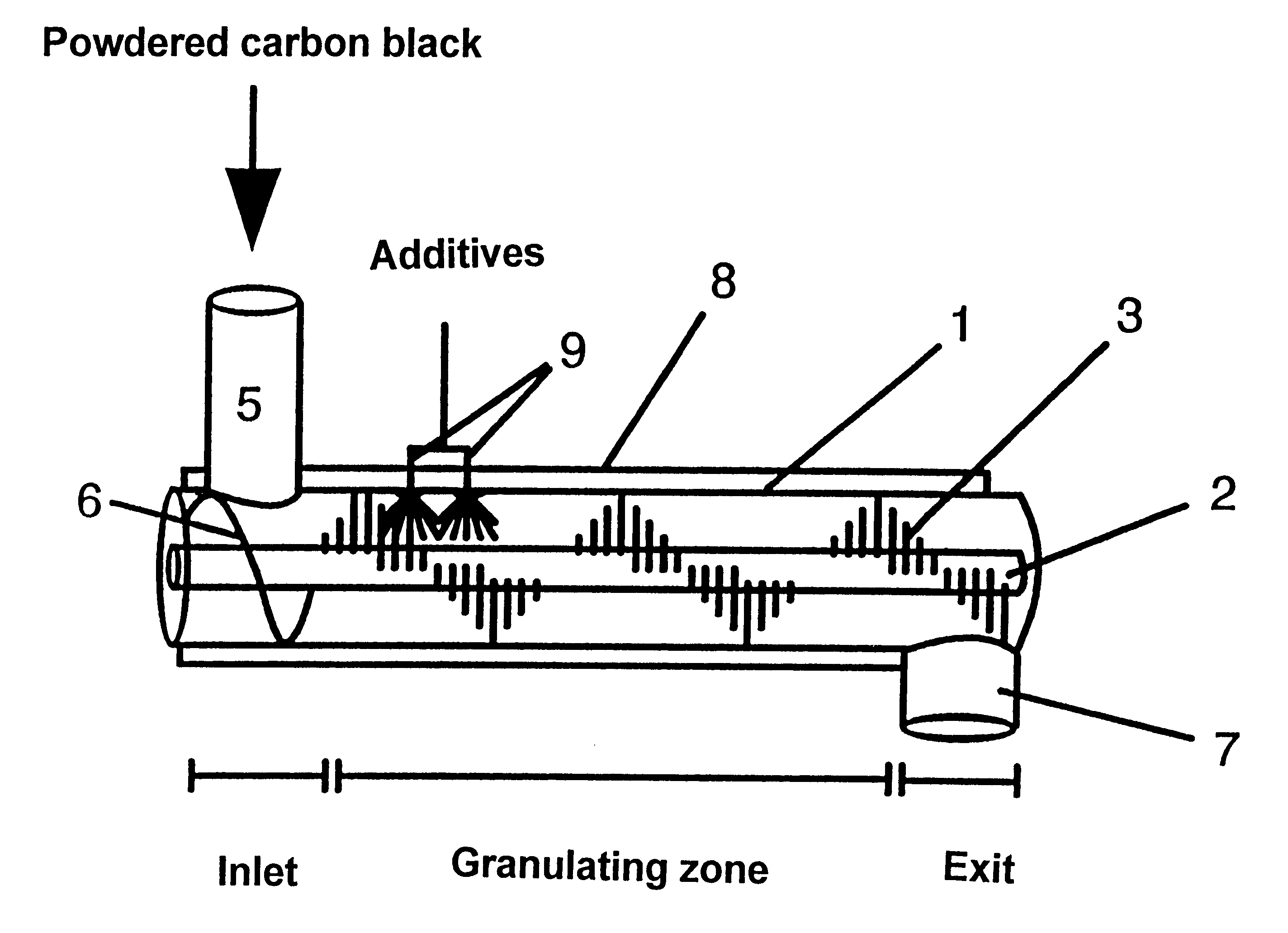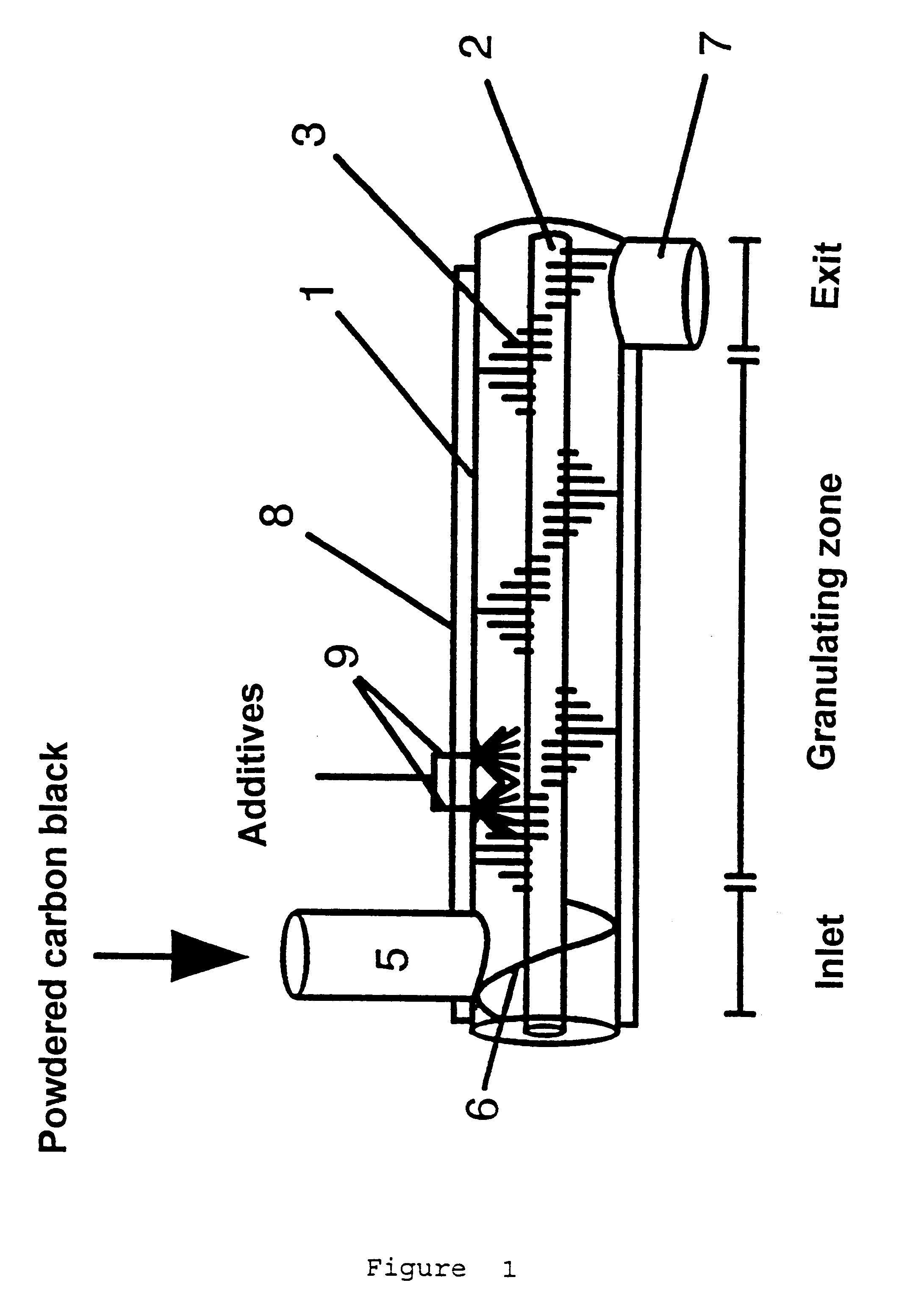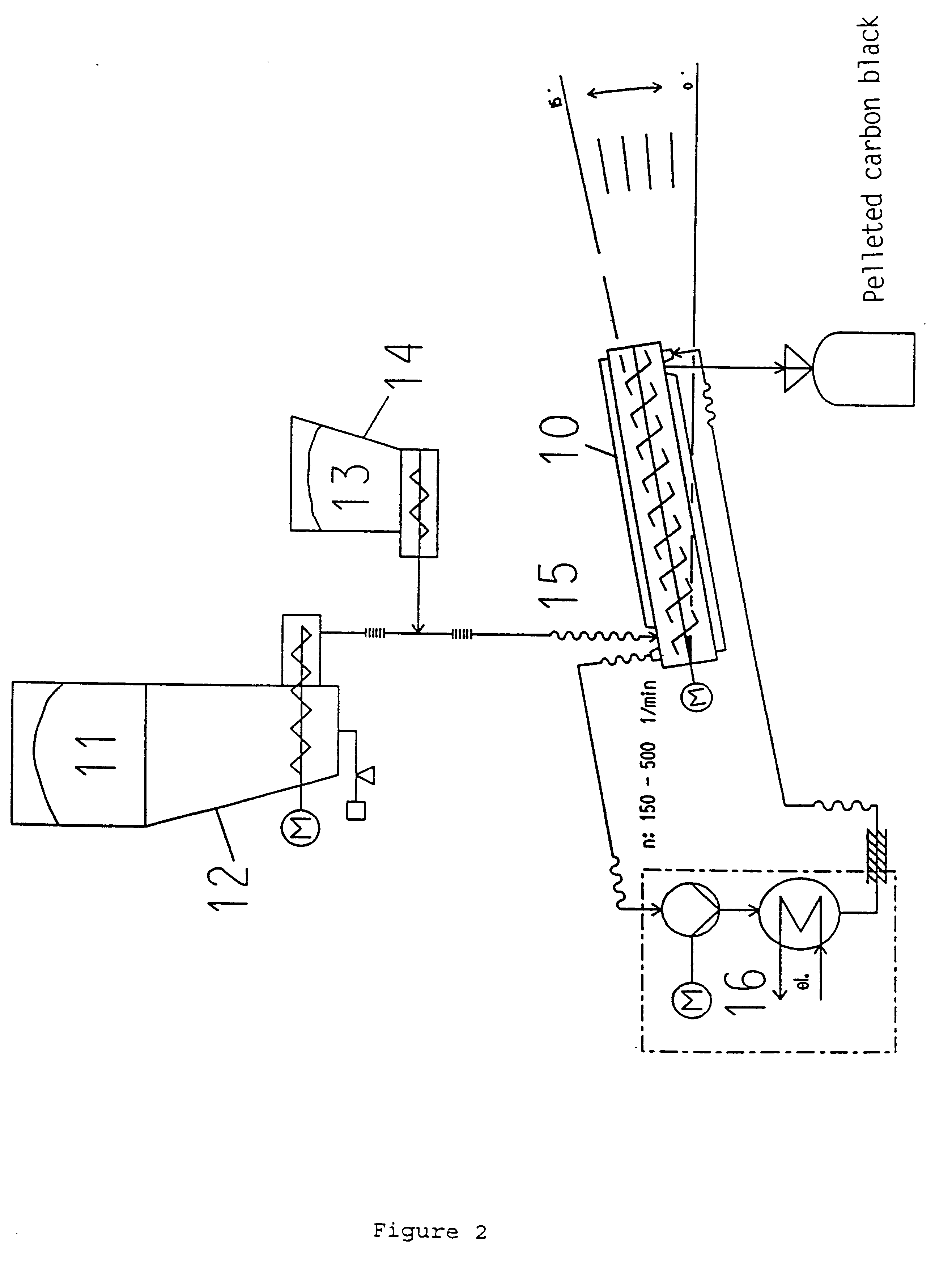Process for continuous dry granulation of powered carbon black
a technology of powered carbon black and granulation process, which is applied in the direction of material granulation, chemical apparatus and processes, chemical/physical processes, etc., can solve the problems of large force on the pellets being formed, general undesirable, and immediate disintegration
- Summary
- Abstract
- Description
- Claims
- Application Information
AI Technical Summary
Problems solved by technology
Method used
Image
Examples
example 2
The effect of residence time on the granulation behavior of carbon black 2, which had an average granulation behavior, was tested. For this, the average residence time was adjusted by altering the inclination of the axis of the granulator with respect to the horizontal, while maintaining a constant carbon black throughput. The average residence time was determined from the filling amount and the carbon black throughput. For this, the filling amount established under steady-state conditions was weighed out for each angle of inclination. The variable conditions and analytical data for the granulated carbon black are listed in Table 3.
example 3
Carbon black 2 was used in order to determine the optimum amount of granulated carbon black to add as seeding material. The amount of seeding material was varied from 10 to 50%. The variable conditions and analytical data are summarized in Table 4. With increasing amounts of seeding material, the proportion of fines and abrasion initially decreases but then passes through a minimum at an amount of seeding material of 30 wt. % and then increases again. The bead size distribution is much narrower with higher amounts of seeding material. The bulk density increases slightly. The bead hardness is barely affected at all by the amount of seeding material.
The optimum amount of seeding material to add depends on the type of carbon black being granulated. It has to be determined separately for each type of carbon black.
example 4
In a further set of tests, carbon black 2 was granulated with the toothed shaft rotating at different speeds, that is to say with different peripheral speeds at the ends of the teeth. The speed was varied from 150 min.sup.-1 to 500 min.sup.-1. The variable conditions and analytical data are summarized in Table 5. With increasing speed, the proportion of fines and abrasion initially decreases and passes through a minimum at 400 min.sup.-1, but then increases again. At 500 min.sup.-1, considerable breakdown of the beads takes place. The width of the bead size distribution (d.sub.80 / d.sub.20) shows the same behavior, with a minimum at 400 min.sup.-1.
PUM
| Property | Measurement | Unit |
|---|---|---|
| weight mean bead diameter | aaaaa | aaaaa |
| density | aaaaa | aaaaa |
| length | aaaaa | aaaaa |
Abstract
Description
Claims
Application Information
 Login to View More
Login to View More - R&D
- Intellectual Property
- Life Sciences
- Materials
- Tech Scout
- Unparalleled Data Quality
- Higher Quality Content
- 60% Fewer Hallucinations
Browse by: Latest US Patents, China's latest patents, Technical Efficacy Thesaurus, Application Domain, Technology Topic, Popular Technical Reports.
© 2025 PatSnap. All rights reserved.Legal|Privacy policy|Modern Slavery Act Transparency Statement|Sitemap|About US| Contact US: help@patsnap.com



